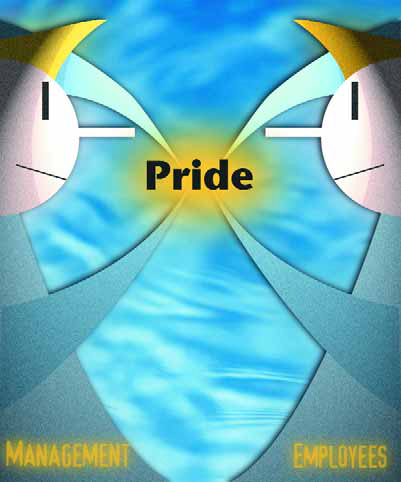column
I operate under the hopeful assumption that all professional watershapers know that detailed, quality construction plans are crucial to the success of any project. Too often, however, I get the unsettling feeling that some contractors in the watershaping trades see plan documents mainly as a means of securing a construction permit. Such a bare-minimum approach can lead to an endless array of problems that can be summed up simply: Plans lacking in detail leave way too many issues to chance and inevitably lead to mistakes. And because we all work in a field where things are quite literally
As much I enjoy seeing my own projects come to fruition, there's something wonderful in seeing watershapers I know achieve great results in their work. I admire and encourage the effort, especially when the outstanding outcomes are the result of a professional's concentrated efforts to improve his or her own skills. This is one of the reasons I teach: I take great satisfaction in sharing my techniques, sensibilities and the conviction that what I do is special, a true form of art.Sometimes I speak with former
What do you really want to know about the arts and crafts of landscaping and watershaping? That's an important question for each and every one of us in the trades to ask of ourselves, because without knowing what you want to know (or at least what you think you should know), all of the talk about the value and power of education is just so much rhetoric. I bring this up because, for a long time now, leaders and regular folks from all walks of the watershaping trades have been beating the educational drum. You read about it in every trade magazine, hear it in the vast majority of seminars and see it in the promotional messages of those who stage trade shows and conferences. Indeed, the
On several occasions during the past few years, I've had the privilege of working with talented professionals who have made it possible for me to operate comfortably far from my home base on what have often been extremely ambitious projects. In fact, I've found some of my most exciting and rewarding recent jobs have been the result of these collaborations with other watershapers. Although working with them is different from
No doubt about it: More and more quality projects are being designed and built by the various segments of the watershaping trades these days. That pleases me for a number of reasons, not the least of which is that it tends to reinforce my observation and belief that great work is done mostly by people who take genuine pride in what they do. Indeed, I see such a consistent correlation between pride and quality that I've come to see the former characteristic as a prerequisite for performance at the highest level. That may seem an obvious point, but when you scratch the surface of the subject as it relates to the watershaping industry, it takes on
To my way of thinking, professional design work requires a professional workspace in which all of the necessary professional tools are available. In fact, for the designer creating custom watershapes, I see the space in which the work actually unfolds as being critical and cutting to the very heart of what it really means to be a "designer." I know that term is a loaded one, which is why I put it in quotation marks. After all, anyone can say that he or she is a designer, even if all they do is sit at a coffee table
It's amazing how many people I meet in the course of my day-to-day life who do not embrace the basic idea that the single most important part of doing business is how they interact with current and prospective clients. Way too often, I'll run into someone - usually an employee, but sometimes (and shockingly) a manager or owner - who just doesn't have a clue or really doesn't seem to care. This happens so often, in fact, that I find my patience growing shorter with the laziness, incompetence or downright rudeness I encounter. It's gotten to the point where I'm
When pursued as it should be, watershaping is all about creating a sensory experience. In fact, you could make the argument that watershapes appeal to
It's unusual to think of such a wonderfully decorative watershape in this way, but the one featured in this edition of "Details" was the result of a client's desire for a measure of safety for the front of his home. The house is located on an intersection in a hilly part of Manhattan Beach, Calif., where the steep, downhill orientation of the streets occasionally lead cars to make turns at unwisely high speeds. Given the orientation of his front door, my client was concerned that, with a bit of very bad luck, he might someday find an out-of-control-driver's car in his foyer. As is the case with many
In preparation for creating plant palettes for my projects, I typically spend hours poring over my Sunset Western Garden book. I thrive on finding plants I haven't tried before, and I look especially for those I haven't seen in anyone's garden. Before I'll try any of these discoveries out on someone else, however, I'll pick up a sample plant and bring it home to my own garden - part science project, part proving ground to see how the plants perform away from the nursery. I've had many successes through the years and probably as many failures, but I learn something from every attempt. What I sometimes find are plants that are






















